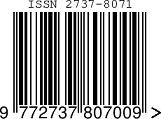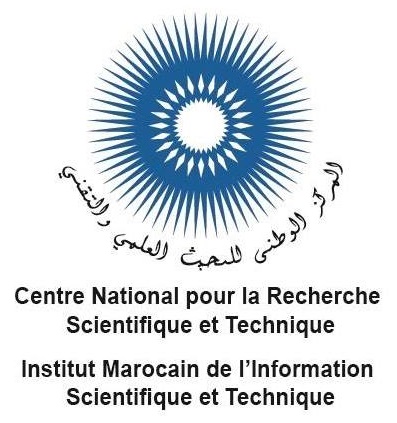Simulation of heat transfer augmentation during constant solar heat flux in circular pipe
Keywords:
Nusselt number, solar flux, heat transfer, reynold numberAbstract
The aim of the current research is to evaluate the flow characteristics and heat transfer enhancement in a circular hose having a diameter of 12.5 mm and 1500 mm Length subjected to a constant solar heat flux of (1000 W/m2) using numerical simulation. The study evolves the changing Reynolds numbers (5000 <Re < 10500) and its effect on the Nusselt number during variable flow rate conditions from 0.45 m/sec to 0.90 m/sec. The heat transfer phenomenon was evaluated during controlled conditions with working fluid as water. The results obtained from numerical investigations were studied to understand the flow and heat transfer enhancement, Nusselt number phenomenon, outlet temperature, and fluid fully developed region. State the most important part of your findings and achievements
Downloads
References
Chavan Kaustubh, Satpute Jitendra, Gulhane Nitin, (2015). “Experimental and fluid structure interaction study of triangular receiver with square fin arrangement using compound parabolic collector”, RESD2015-Proceedings of the International Seminar on Renewable Energy and Sustainable Development, 2, 200-206
Chew, T. C.,Tay, A. O.,Wijeysundera, N. E., (1989). “A Numerical Study of the Natural Convection in CPC Solar Collector Cavities with Tubular Absorbers”, Journal of Solar Energy Engineering,111, 16-23
Jadhav, A. S., Gudekar, A. S.,Patil, R.G., Kale, D. M., Panse, S. V., (2013), “Performance analysis of a novel and cost effective CPC system”, Energy Conversion and Management, Vol. 66, pp. 56-65
Javier Muñoz, Alberto Abánades, (2011), “Analysis of internal helically finned tubes for parabolic trough design by CFD tools”, Applied Energy, Vol. 88, pp. 4139–4149
Scampoli Steve,(2012) “ ANSYS advantage”, Vol. 6 , No. 1, pp. 14-16
John W. Allen, Norman M. Levitz , Ari Rabl, Kent A, Reed, William W, Schertz, George Thodos, and Roland Winston, (1975),“Development And Demonstration Of Compound Parabolic Concentrators For Solar Thermal Power Generation And Heating And Cooling Applications”, Progress Report.
SA Waghmare, KV Chavan, PB Muntode, NP Gulhane, (2017), “Experimentation of surface areal irradiance method for solar flux measurement in compound parabolic collector”, Optik, Vol. 147, pp. 373-384.
Romero, V.M., Cerezo, E., Garcia, M.I., Sanchez, M.H., (2014), “Simulation and validation of vanilla drying process in an indirect solar dryer prototype using CFD Fluent program” ,Energy Procedia, 57, 1651-1658.
NP Gulhane, KV Chavan, (2014), “A critical technological literature review of–photovoltaic/thermal solar collectors system”, Int J Current Eng Tech, Vol. 3, pp. 258-264"
Roldán, M I; Valenzuela, L; Zarza, E; (2013), “Thermal analysis of solar receiver pipes with superheated steam”, Applied Energy, 103, 73-84.
K Chavan, N Gulhane, (2017), “Performance analysis of compound parabolic collector with extended surfaces inside the triangular receiver”, International Journal of Renewable Energy Technology, Vol. 8 (1), pp. 24-46
Braga, C.V.M., Saboya, F.E.M., (1999).“Turbulent heat transfer, pressure drop and fin efficiency in annular regions with continuous longitudinal rectangular fins”, Experimental Thermal and Fluid Science, 20(2), 55-65
SA Waghmare, KV Chavan, NP Gulhane, (2018), “Numerical simulation of tracking modes for compound parabolic collector with tubular receiver”, IEEE Transactions on Industry Applications, Vol. 55 (2), pp. 1882-1889
Mark, J. C., (1998), “Demonstration of the effect of flow regime on pressure drop”, Mathematica- Introduction to multifluid, 1-69
Sukumar, R Sam, Sriharsha, G, Arun, S Bala, Dilip, P, Sanyasi, Ch, (2013).“Modelling And Analysis Of Heat Sink With Rectangular Fins Having Through Holes”, International Journal of Engineering Research and Applications, 3(2), 1557-1561
MersihaŠumi?, (2014). “Thermal Performance of a Solarus CPC-Thermal Collector”, Master Level Thesis, European Solar Engineering School, 186, 1-54.
Stefanovi, Velimir; Pavlovi, Saša; Apostolovi, Nenad; (2011), “Mathematical model and numerical simulation of cpc-2v concentrating solar collector”, Automatic Control and Robotic, Facta Universitatis, 10(2),153 – 166.
K Chavan, N Gulhane, (2016), “Performance investigation of compound parabolic collector system with triangular receiver with and without internal fins, International Journal of Energy and Statistics, Vol. 4 (01), pp. 1650004
Soteris A. Kalogirou, (2004), “Solar thermal collectors and applications”, Progress in Energy and Combustion Science Vol.30, pp 231–295.
S P Sukhatme,J K Nayak, (2008), “ Solar Energy Principles of Thermal Collection and Storage”, Third Edition, Delhi
Nasif Shams, (2013), “Design of a Transpired Air Heating Solar Collector with an Inverted Perforated Absorber and Asymmetric Compound Parabolic Concentrator”, Doctoral Thesis report, Dublin Institute of Technology.
Yunus Cengel and Afshin Ghajar, (2014), “Heat and Mass Transfer: Fundamentals and Applications”, Fifth Edition, Mc Graw Hill Education.
Praveen K. Namburu, Debendra K. Das , Krishna M. Tanguturi, Ravikanth S. Vajjha, (2009), “Numerical study of turbulent flow and heat transfer characteristics of nanofluids considering variable properties”, International Journal of Thermal Sciences, Vol. 48, pp. 290–302
A. Akbarinia, A. Behzadmehr, (2007), “Numerical study of laminar mixed convection of a nanofluid in horizontal curved tubes”, Applied Thermal Engineering, Vol. 27, pp. 1327–1337
Downloads
Published
How to Cite
Issue
Section
License
Copyright (c) 2021 Chandan Chaudhari, Kaustubh V.Chavan

This work is licensed under a Creative Commons Attribution 4.0 International License.
Copyright on any article in the International Journal of Engineering and Applied Physics is retained by the author(s) under the Creative Commons license, which permits unrestricted use, distribution, and reproduction provided the original work is properly cited.
License agreement
Authors grant IJEAP a license to publish the article and identify IJEAP as the original publisher.
Authors also grant any third party the right to use, distribute and reproduce the article in any medium, provided the original work is properly cited.















